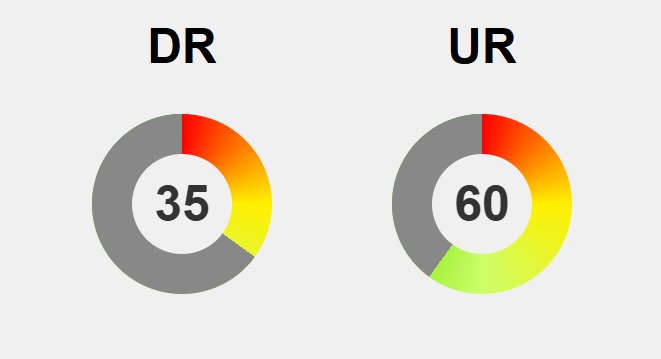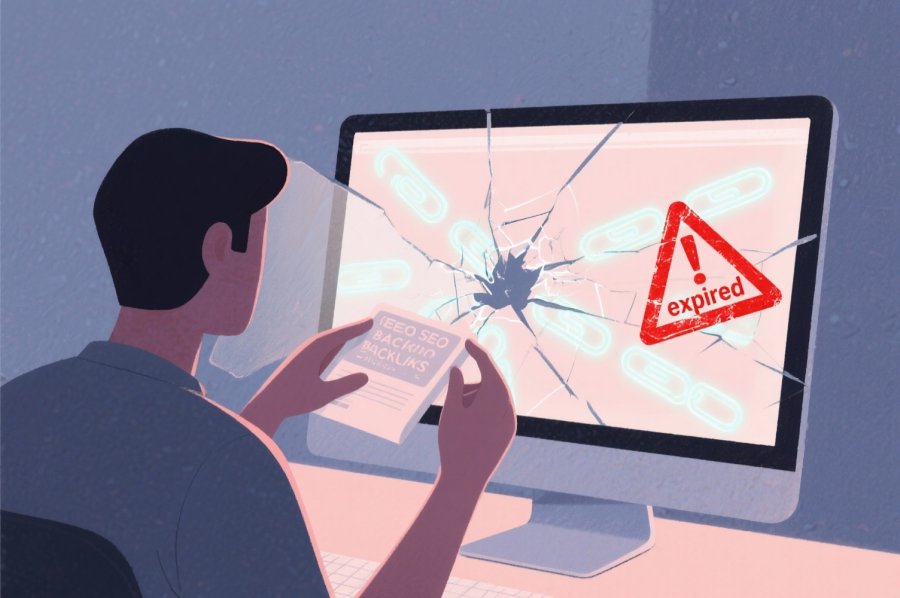Noticing a sudden drop in your Domain Rating might feel alarming, but is it really a setback or a sign of a seismic shift in how backlink quality is measured? Recent updates by Ahrefs have recalibrated their DR algorithm, emphasizing trustworthiness and relevance over sheer link volume. This means your score now more accurately reflects genuine authority, rewarding high-quality backlinks from reputable, industry-specific sources. While many sites experience dips due to devaluation of low-quality or irrelevant links, those focusing on authentic link-building and valuable content can see stability or even improvement. This shift challenges SEO professionals to rethink strategies—pivoting from quantity to quality—and highlights the importance of ongoing backlink audits and relationship-building. Could your site’s authority be better represented by genuine backlinks rather than superficial metrics? Embracing this change offers an opportunity to build a resilient, trustworthy online presence aligned with future search engine priorities.

Understanding Domain Rating and the Significance of Ahrefs’ Major Update
If you’ve recently logged into Ahrefs and noticed your Domain Rating has taken a sudden dip, you’re not alone. Many website owners across various industries have experienced sharp decreases—sometimes by 20, 30, or even 50 points—overnight. This isn’t a sign of your site losing authority but rather a reflection of a major update Ahrefs rolled out to improve how they evaluate backlink profiles. The goal? To make the metric more accurate and aligned with how search engines assess trust and relevance today.
Domain Rating is a score that estimates your website’s overall backlink strength compared to your competitors. It’s a useful benchmark for understanding your relative authority in your niche. Previously, it was possible for sites to boost their DR simply by accumulating large numbers of low-quality links. The recent update shifts the focus, emphasizing the quality and relevance of backlinks over sheer volume. This means your DR now better reflects genuine trust and influence rather than superficial link-building.
The update isn’t about penalizing sites but about creating a fairer, more transparent picture of online authority. Sites with cleaner, high-quality backlink profiles might see their scores stabilize or even improve, while those relying on spammy or irrelevant links could experience drops. The recalibration aims to filter out links that don’t pass the new standards of trustworthiness, making the metric a more reliable indicator of true influence in your industry.
This change can feel unsettling at first, especially if your DR has suddenly decreased. But it’s important to see this as a recalibration rather than a penalty. When DR drops, it often means that low-quality links are being devalued or removed. Conversely, if your backlink profile is strong and relevant, your score should hold steady or bounce back over time. Understanding this shift helps you focus on building genuine authority—by earning high-quality backlinks from reputable, niche-relevant sources—rather than chasing after quick link gains.
In essence, this update encourages a more sustainable, trust-based approach to SEO. Regularly auditing your backlink profile, disavowing spammy links, and creating valuable content that naturally attracts high-quality references become even more critical. By aligning your strategy with these principles, you’re better positioned to navigate future algorithm changes and build a resilient online presence that reflects real authority.
How the DR Update Reshapes Website Authority and Patterns of Fluctuation
The recent DR update by Ahrefs has caused noticeable shifts across many websites, revealing how sensitive the metric is to changes in backlink quality. Sites that previously appeared strong due to large volumes of low-quality or irrelevant links often saw their scores drop sharply. This isn’t because their backlink profiles suddenly weakened, but because the new algorithm now filters out links that don’t meet higher standards of trustworthiness and relevance. As a result, these sites seem less authoritative, even if their actual backlink counts remain stable.
On the flip side, websites that have focused on earning high-quality, niche-relevant backlinks tend to see their scores hold steady or improve. The update rewards backlinks from reputable sources within your industry, emphasizing trust over sheer quantity. This shift pushes site owners to rethink their link-building strategies, encouraging more ethical and targeted efforts. Genuine authority now reflects real influence, not just a high number of links, which makes the DR score a more accurate mirror of true online trust.
Sudden drops can feel alarming but are often part of this recalibration process. When low-quality or spammy links are devalued or removed, the DR score adjusts accordingly. This isn’t a penalty but a correction, aligning the metric more closely with real backlink quality. Websites that experience dips should view this as an opportunity to audit their backlink profiles, disavow harmful links, and focus on building relationships with reputable, relevant sites.
Some sites experience fluctuations not because they’re losing authority but because their competitors are gaining stronger backlinks. Even without any direct link loss, the relative nature of DR means that if others improve their backlink profiles, your score may temporarily decline. This highlights that DR is a comparative metric, reflecting your standing in the broader landscape rather than an absolute measure of authority.
Websites that have proactively cleaned up their backlink profiles or invested in earning high-quality links tend to recover quickly. Their scores stabilize or rise as they align with the new standards of relevance and trust. This pattern underscores the importance of ongoing backlink management and content quality, especially in a landscape where the emphasis is shifting from volume to value.
Overall, the impact of the update isn’t just about short-term fluctuations. It’s a sign that authentic, relevant backlinks are more vital than ever. Sites that adapt by prioritizing genuine relationships and valuable content are better positioned to thrive in this new environment. Recognizing these patterns can help site owners turn DR fluctuations into strategic opportunities for long-term growth.

Decoding DR Changes: Strategies for Interpretation and Action
When you notice your Domain Rating suddenly dropping, it’s natural to feel concerned. But these shifts are often a sign of the recent algorithm recalibration rather than a penalty. Rather than reacting emotionally, take a step back and analyze what’s really happening. The new DR calculation emphasizes the quality and relevance of backlinks, so a decrease might simply mean that low-value or irrelevant links are being devalued or removed from your profile. This results in a more accurate reflection of your true authority, even if it causes a temporary dip.
Start by reviewing your backlink profile with tools like Ahrefs. Look for links that might have been discredited or devalued—these are often the culprits behind sudden drops. If many low-quality or irrelevant links have been filtered out, your DR decline is likely part of the recalibration process. On the other hand, if you’ve recently lost backlinks from high-authority sites, that’s a different issue requiring targeted action. The key is to distinguish between normal algorithm adjustments and genuine problems needing attention.
Focus on acquiring backlinks from reputable, niche-relevant sources. The update rewards links from trustworthy sites within your industry. Instead of aiming for sheer volume, prioritize earning high-quality, natural backlinks through valuable content and genuine relationship-building. Creating content that addresses real needs and offers insights makes it more likely that authoritative sites will reference you, helping stabilize or improve your DR.
Regular backlink audits become more critical now. Use Ahrefs or similar tools to identify and disavow spammy or suspicious links that could be dragging your profile down. Removing or discrediting these harmful links aligns your profile with the new standards of trust and relevance, which can help your DR recover over time. This proactive approach keeps your backlink profile clean and focused on quality.
See fluctuations as opportunities rather than setbacks. When your DR dips, it’s a signal to reassess and strengthen your backlink profile. Conduct a thorough audit, identify weak points, and focus on building authentic relationships with high-authority, relevant sites. This shift toward quality over quantity lays a stronger foundation for long-term SEO success.
Remember, DR is a relative metric—not a direct ranking factor. Changes in your score reflect broader shifts in the backlink landscape and your competitors’ efforts. Instead of fixating on the number, concentrate on improving your backlink quality and content relevance. This mindset ensures you’re building a resilient, trustworthy online presence that can weather future updates.
By understanding these dynamics, you can respond strategically rather than panic. Use fluctuations as a guide to refine your SEO approach, emphasizing genuine authority through valuable content and ethical link-building. Over time, these efforts will boost your site’s reputation and search visibility more sustainably than chasing quick fixes.
Ultimately, adapting to DR changes means focusing on authenticity and relevance. A dip isn’t a sign of failure but an opportunity to strengthen your backlink profile and content strategy. Keeping a proactive, quality-driven mindset helps you stay ahead in an evolving SEO landscape, ensuring your site remains resilient and authoritative in the long run.
By understanding these dynamics, you can respond strategically rather than panic. Use fluctuations as a guide to refine your SEO approach, emphasizing genuine authority through valuable content and ethical link-building. Over time, these efforts will boost your site’s reputation and search visibility more sustainably than chasing quick fixes. If you experience a sudden DR drop, staying informed about updates and adjustments is crucial; for more details, check out this comprehensive overview of the recent changes in DR calculation at sudden DR drop.
Adapting Your SEO Tactics in the Wake of the New DR Landscape
After understanding how the recent DR update shifts the focus toward backlink quality and relevance, adapting your SEO strategies is more important than ever. Instead of chasing after a high volume of links, aim to earn backlinks from reputable, niche-relevant sites within your industry. Creating valuable, shareable content that addresses your audience’s needs naturally attracts these high-quality references. Think of your content as a magnet—if it offers real insights or solves common problems, influential sites and industry leaders will be more inclined to link to it.
Regularly auditing your backlink profile is now crucial. Use tools like Ahrefs to identify low-quality, spammy, or irrelevant links that might be negatively impacting your score. Disavowing or removing these harmful links helps clean up your profile and aligns it with the new standards of trustworthiness. This proactive approach not only improves your DR but also boosts your overall site credibility, making your authority more resilient in the long run.
Building relationships remains a cornerstone of sustainable SEO. Reach out to industry influencers, participate in relevant online communities, and contribute guest content to reputable websites. These efforts can earn you backlinks from authoritative sources, which the updated algorithm rewards more heavily. Focus on creating genuine connections rather than quick link schemes; over time, these relationships will contribute to a stronger, more trustworthy backlink profile.
Content creation should also reflect the new standards. Producing in-depth, niche-specific material that genuinely addresses your audience’s questions and challenges encourages other reputable sites to cite and link to you. When your content demonstrates expertise and adds real value, it naturally attracts backlinks from trustworthy sources. Consistently delivering high-quality content not only helps you earn links but also reinforces your site’s authority and relevance.
Monitoring your referring domains is an ongoing task that can’t be neglected. Keep an eye on the authority and trustworthiness of sites linking to you. Disavow suspicious or low-quality links that could be harming your profile, and nurture relationships with high-authority, relevant sources. Regular backlink audits ensure your profile remains clean and aligned with the latest standards, supporting your long-term SEO health.
Seeing these shifts as opportunities rather than setbacks can transform your approach. Focus on earning authentic backlinks and creating valuable content, and you’ll build a more resilient online presence. By aligning your strategy with the principles of relevance, trust, and quality, you prepare your site to thrive despite future algorithm updates. This mindset not only helps recover from fluctuations but also lays a strong foundation for sustained growth in an evolving digital landscape.

Embracing a Trust-Centric Future: Insights and Outlook on DR and SEO Evolution
The recent recalibration of Ahrefs’ Domain Rating marks a pivotal shift toward more meaningful SEO metrics. Instead of valuing sheer link volume, the focus now centers on the quality, relevance, and trustworthiness of backlinks. This change encourages site owners to prioritize genuine authority over quick fixes or superficial link-building tactics. Over the long term, websites built on authentic relationships and valuable content will benefit most, as search engines continue refining their algorithms to reward trust and relevance.
Looking ahead, this update signals a broader industry move toward trust-based SEO. Metrics like DR are becoming clearer indicators of true authority, helping marketers and site owners better understand their place in the digital landscape. The emphasis will increasingly be on earning relevant, high-quality backlinks that demonstrate expertise and credibility, aligning with Google’s ongoing focus on experience, expertise, authority, and trust (E-E-A-T). This shift underscores the importance of ethical, sustainable practices over shortcuts or manipulative tactics.
As algorithms evolve, expect search engines to further refine their ability to evaluate backlink profiles, making superficial link schemes less effective. The diminishing returns from black-hat strategies and low-quality link farms will push SEO professionals to invest in creating valuable content and building real industry relationships. Those who adapt by fostering genuine authority and trust will enjoy more stable and lasting visibility, positioning themselves ahead of competitors still relying on outdated tactics.
Maintaining a proactive approach to backlink management will remain crucial. Regular audits, disavowing spammy links, and seeking out niche-relevant, high-authority backlinks will safeguard your site’s reputation and resilience. In this new landscape, long-term growth depends on consistency and integrity—creating content that earns backlinks naturally and nurturing authentic connections that stand the test of future algorithm updates.
In essence, the recalibration of DR is more than a technical adjustment; it’s a call to focus on what truly matters in SEO—building a trustworthy, authoritative presence rooted in relevance and quality. Embracing these principles offers a sustainable path forward, ensuring your website remains resilient, credible, and well-positioned amidst ongoing digital and algorithmic changes. The future favors those committed to genuine authority over superficial metrics, setting the stage for lasting success.






